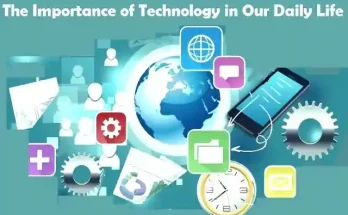Technology that improves employee and customer experience and the bottom line will win out this year. Also, it’s reasonable to think smaller upstart companies will chip away at the dominance of large tech providers.
Artificial Intelligence will continue to improve exponentially with new developments in natural language processing, voice recognition and other software algorithms. We could see machines that can pass the Turing test soon.
Artificial Intelligence
Artificial intelligence, or AI, isn’t some sci-fi movie fantasy. Rather, people are already using AI to select the movies they will enjoy, operate their home appliances and thermostats, answer questions about medical symptoms and diagnose illnesses.
AI will directly enable the automation of several occupations that involve routine and repetition – from truck driving to telemarketing. In addition, in approximately 60% of occupations, at least 30% of constituent activities are technically automatable by adapting currently proven AI technologies (McKinsey Global Institute).
The benefits unleashed by AI – innovation, efficacy, velocity and scalability – will have significant implications for companies and societies. They will reshape sector value chains, foster new business models and accelerate cycles of creative destruction. They will also enable companies to reach new markets and expand their addressable market. Moreover, by automating capabilities previously delivered by human professionals, AI will lower the cost and broaden participation in services such as healthcare and transport.
The Internet of Things
With the advent of super-cheap computer chips, virtually anything can now be connected to the Internet and become part of the Internet of Things (IoT). The IoT includes everything from a refrigerator that monitors food quantities and orders refills without your involvement to smart cities that use sensors to manage infrastructure.
But the IoT has a downside: Because these devices can be hacked, they can reveal a lot about you to your adversaries. That’s why US intelligence briefings have warned that connected thermostats, cookers and cameras could be used to spy on citizens or disrupt critical infrastructure.
As these devices proliferate, they’ll require faster networks to handle the massive amounts of data that they generate. This is where 5G comes in, the fifth-generation cellular wireless technology that will allow devices to connect directly to networks rather than via routers, boosting their speed and security. This will also open up new opportunities for businesses that want to leverage IoT data.
6G
After 5G, 6G will be the next major wireless network generation. It will be characterized by mind-boggling speeds, massive capacity and low energy consumption.
One of the primary technology trends that 6G will drive is a new man-machine interface, which will eliminate the need for touch screens and keyboards in many applications, replacing them with gestures and voice commands. This will also be the foundation for smart home networks that can control appliances and services automatically, based on data collected from the environment and the user’s behavior.
Another important technological trend that will be enabled by 6G is ultra-low latency, which will be essential for a wide range of applications, including autonomous vehicles and remote surgery. To make this possible, engineers are exploring the potential of using terahertz waves, which offer much higher bandwidth than currently available frequencies. They are expected to deliver staggeringly fast data transfer rates and will require advancements in antenna technology.
Virtual Reality
VR has been a long-time fascination and has finally gotten close to living up to its promises. But it still has a way to go.
It can improve retail, for example, by allowing customers to see what products would look like in their homes (think Westfield Mall). VR can also help doctors treat patients with disorders such as anorexia, anxiety and PTSD. It could also be used to fight phobias like needle phobia, aquaphobia and others.
In addition, it can transform gaming and entertainment, providing immersive experiences for users. It can also be used in education and training to provide hands-on experiences that are difficult, expensive or dangerous to replicate in real life. Moreover, it can make sports more engaging by providing virtual training and competition.




